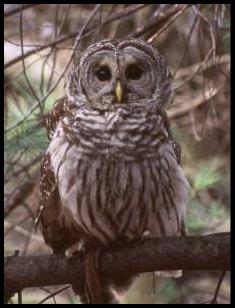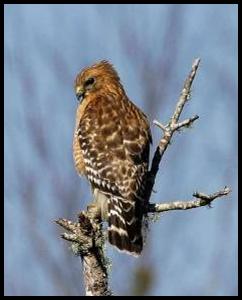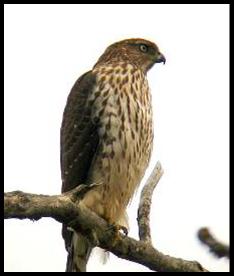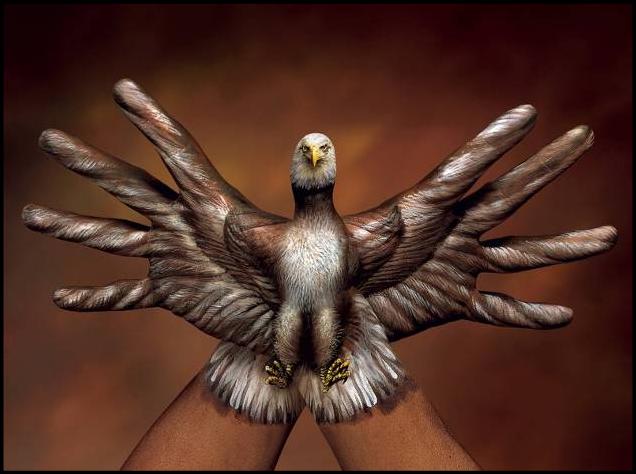





|
All things seem to point to us studying Raptors. Not the prehistoric variety, but the ones we find in our backyard.
We have many usual suspects in our yard that round out our perfect food chain. First offender in the raptor arena...the Barred Owl. Although we have not seen him in a few weeks, we are considering the fact that the feeding hole is frozen over, and it is rearing time for young, to be the two most likely causes for his disappearance. We read that owlets usually are hatching around the end of February, and what types of trees make the best homes for these creatures, so we are hoping to discover a nest in the back woods. We are lucky, very lucky, to have an undisturbed woodland behind our house. Something that in Northern Virginia is disappearing rapidly. This brings us many interesting raptors.
The latest criminal mastermind to take residence over the pond, strangely enough in the same branch the owl was spotted in, was a Cooper’s Hawk (3rd picture). These hawks feed mainly on songbirds. It is no coincidence that he was perched at a superb vantage point to overlook my feeders. However, after carefully watching him, and listening to Harbour bark endlessly, I came to the conclusion he may have been more interested in a drink. I had just sledged the ice on the pond and broken a pretty large opening in the pond’s surface (after many days of subfreezing temps left the pond with a 5 inch block). He came about 20 minutes later. He never did chance the dog, so I don’t know if he came back later for that drink or not.
http://www.dgif.state.va.us/wildlife/raptors.html http://www.carolinaraptorcenter.org http://www.bioweb.uncc.edu/bierregaard/barred_owls.htm Owl baby webcam! *NEW* |


|
Coopers Hawk |
|
Barred Owl |

|
Did you know? Peregrine Falcons are the fastest flyers on the planet? And the US is constantly trying to mimic their maneuvers by building faster, better more agile fighter jets?
There are many different kinds of raptors, and they each possess a different strength. Some have amazing eyesight, seeing prey up to 1/4 mile away, while others can hear little voles under a blanket of snow. Other raptors are built for speed, while others have amazing strength that can crush a skull in moments.
The flat face on a ‘Great Grey Owl’ work similar to a satellite dish, they can move their facial feathers to key in on the slightest sound. Many owl skulls have ear canals which point in different directions, allowing them to hear above and below them as needed.
Owls feathers taper at the tips in a feathery pattern. This allows them to fly without a sound if they choose to.
Peregrine Falcons have been used to assist man in hunting for 100’s of years.
The eyes of many raptors have multiple eyelids. This protects their eyes when flying at great speeds. While others have the ability to change the focus of the eye from ‘wide angle’ to ‘telephoto’ as they approach the prey. Others still, have the ability to see ultra violet light patterns...which, happens to be the color of vole urine.
Source for this great bit of knowledge: Raptors, Nature PBS series, Raptors: A Kids Guide to Birds of Prey, Christyna M. Laubach |